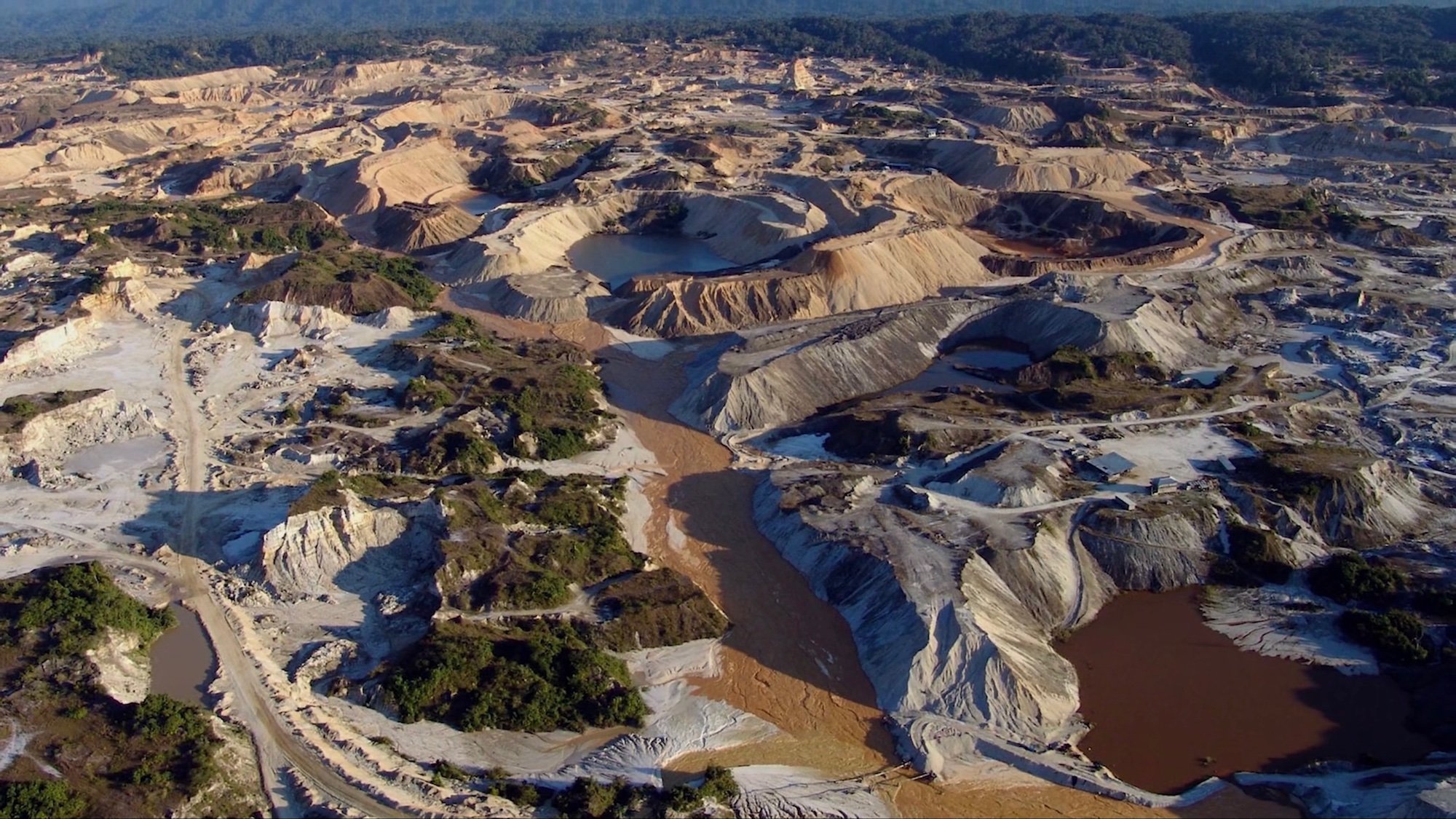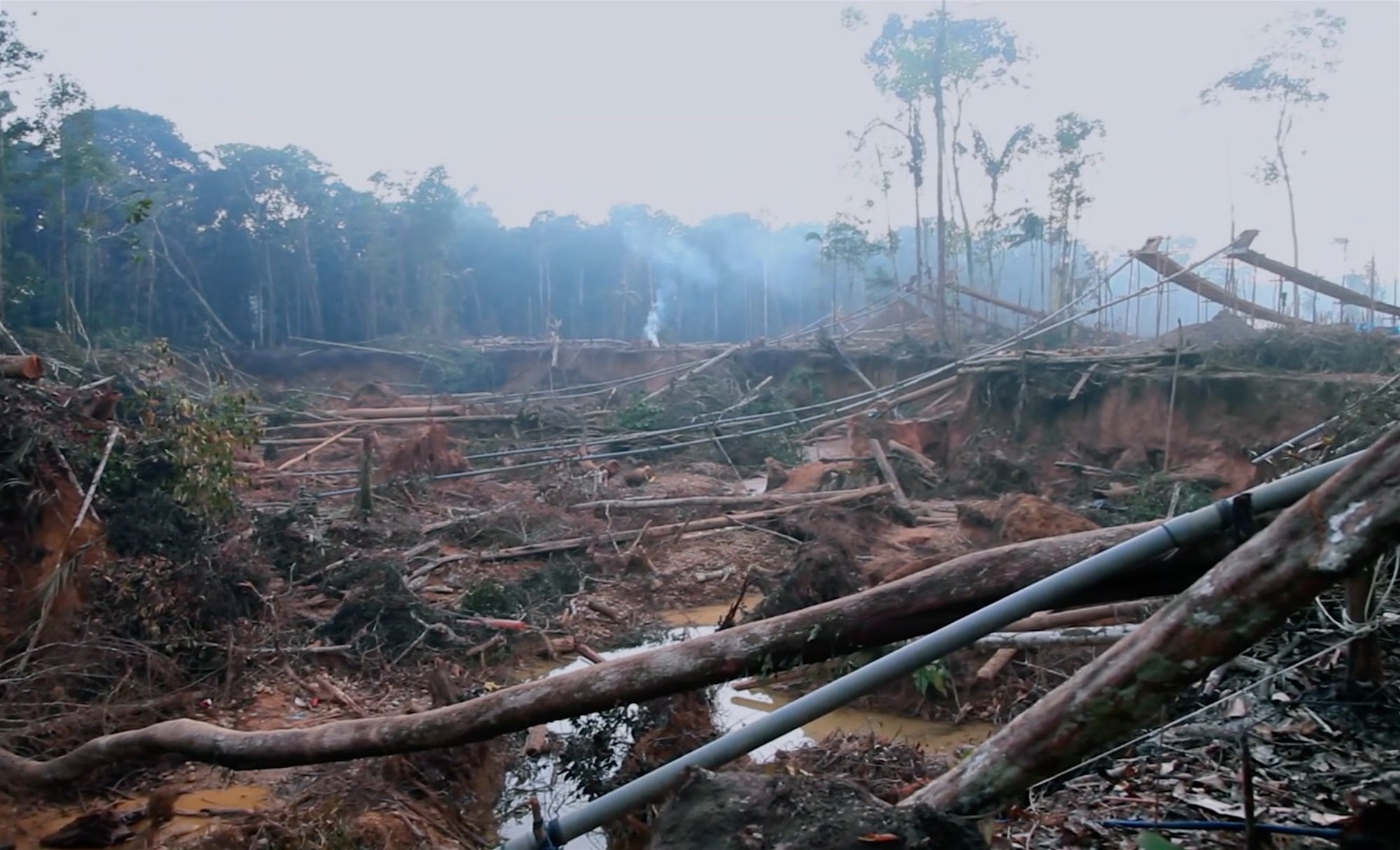Amazon Aid Foundation on ‘River of Gold’
The Amazon rainforest is an ecosystem of immense importance; around 30 million people live there, 10% of the world’s biodiversity is found there, the forest even regulates rainfall across the world, including, here in Scotland! The Amazon is a carbon store, an essential defence against the current climate catastrophe.
Amazon Aid Foundation advocates this information and actions against threats, including illicit gold mining. As this activity increases, so does its relevance in the jewellery industry. To find out more we spoke to Amazon Aid’s founder Sarah Dupont, based in North America, on their multimedia documentary ‘River of Gold’ (2020).
Can you tell us a bit about ‘River of Gold’?
‘River of Gold’ is the Amazon Aid Foundation’s flagship documentary film that was produced to educate audiences worldwide about the importance of the Amazon and the local and global implications of its destructions. We chose to document the visceral lens of illicit and unregulated gold mining, as it is the fastest and most dangerous type of deforestation in the Amazon today. The mercury used in the extractive process is poisoning peoples and the environment while criminal activities are flourishing. Legitimate supply chains are tainted by illicit gold flows while deforestation of the Amazon and Earth’s most valuable ecosystems are on the rise.
Images Courtesy of Amazon Aid Foundation and Ron Haviv/ VII Agency
Why do you think it is important for jewellers and goldsmiths to view ‘River of Gold’?
Awareness is a first step for creating change. Issues surrounding ASGM (Artisanal and Small-scale Gold Mining) are complex and it will take a diverse community of stakeholders to create systemic change and produce a cleaner supply chain for gold. Approximately 40% of all gold used is by the jewellery industry and engagement will be critical. The goal is not to boycott gold, but to transform the industry one step at a time. This cannot be done without the jewellery sector.
How do ‘River of Gold’ viewers react to the content? Is there any notable change in the viewers reactions, now compared to when the first version of the film was released in 2016?
We produced our final iteration of ‘River of Gold’ in 2020. It has taken around 10 years to produce the film that viewers see today. As the situation changed in the Amazon and world so did the film. When we first decided to produce ‘River of Gold’ the situation with ASGM in the Amazon was little known. We were the first to get inside and document the mining camps, a very dangerous endeavour.
Today ‘River of Gold’ has been seen all over the world, from children in the classroom to global decision makers. The viewers reactions are in most cases still the same. Shock and sadness, reactions of hopelessness juxtaposed with calls for activism. The shock waves have reverberated far and wide. While still too few people have knowledge of where their gold comes, we have seen the awareness grow, and now many are working to create a cleaner and transparent supply chain for gold. It has been inspirational.
‘River of Gold’ film cover image
Do you believe the film content would be any different if it were being made today, in 2022?
When you visit an ASGM camp in the Amazon today you will see some of the same mining equipment used during the gold rush in California in the 1800’s. The mining technique of using mercury to separate the gold from the sediment is still prevalent today. In many cases, going back to film the mining would achieve the same results, the same situation - that is if you can even get inside the camps. The difference would be that there is more mining and more devastation across the Amazon through small scale mining techniques as well with using large scale equipment. The criminal activities have also increased. The lack of regulations and supply chain transparency create a perfect vehicle for promoting money laundering, drug and human trafficking, and the funding of terrorists groups and war, including Putin’s recent war in Ukraine.
What impact do you think ‘River of Gold’ and films like it have had on the gold industry in the Amazon and around the world?
For many years now ‘River of Gold’ and our educational support materials have achieved Amazon Aid’s mission to create awareness about the Amazon and promote systemic change to protect it. We chose to use the power of film and multi-media as the vehicle, and ‘River of Gold’ has proven to be a visceral purveyor of the truth. Now others can be a witness of what is happening to the Amazon - the world’s most critical land ecosystem. It’s a heavy price to pay for gold and I know that we can be better. With the Amazon now in the tipping point, awareness and action will be critical if we are to keep the Amazon standing.
We have been fortunate to screen ‘River of Gold’ to many in the gold industry around the world and the result has been really interesting. I have found jewellers in general to be compassionate and caring, and interested in finding working solutions. Jewellers are artists and, in many cases, create their work for love.
This was a wonderful surprise to me, and I remain hopeful that more will recognize the problem and take a stand.
How can jewellers and goldsmiths get more involved in Amazon Aids work, is there other related projects we should follow?
We would love for goldsmiths and jewellers to join Amazon Aid in the Cleaner Gold Network, an alliance of consumers, scientists, artists, educators, indigenous communities, NGOs, and companies from the gold sector, engaging in a multi-initiative approach to raise awareness and promote solutions for illicit and unregulated gold mining in the Amazon.
Images Courtesy of Amazon Aid Foundation and Ron Haviv/ VII Agency
Thank you, Sarah, for sharing more information about the ‘River of Gold’ film, on behalf of the Amazon Aid Foundation.
Images Courtesy of Amazon Aid Foundation and Ron Haviv/ VII Agency
For more information about Amazon Aid Foundation:







